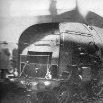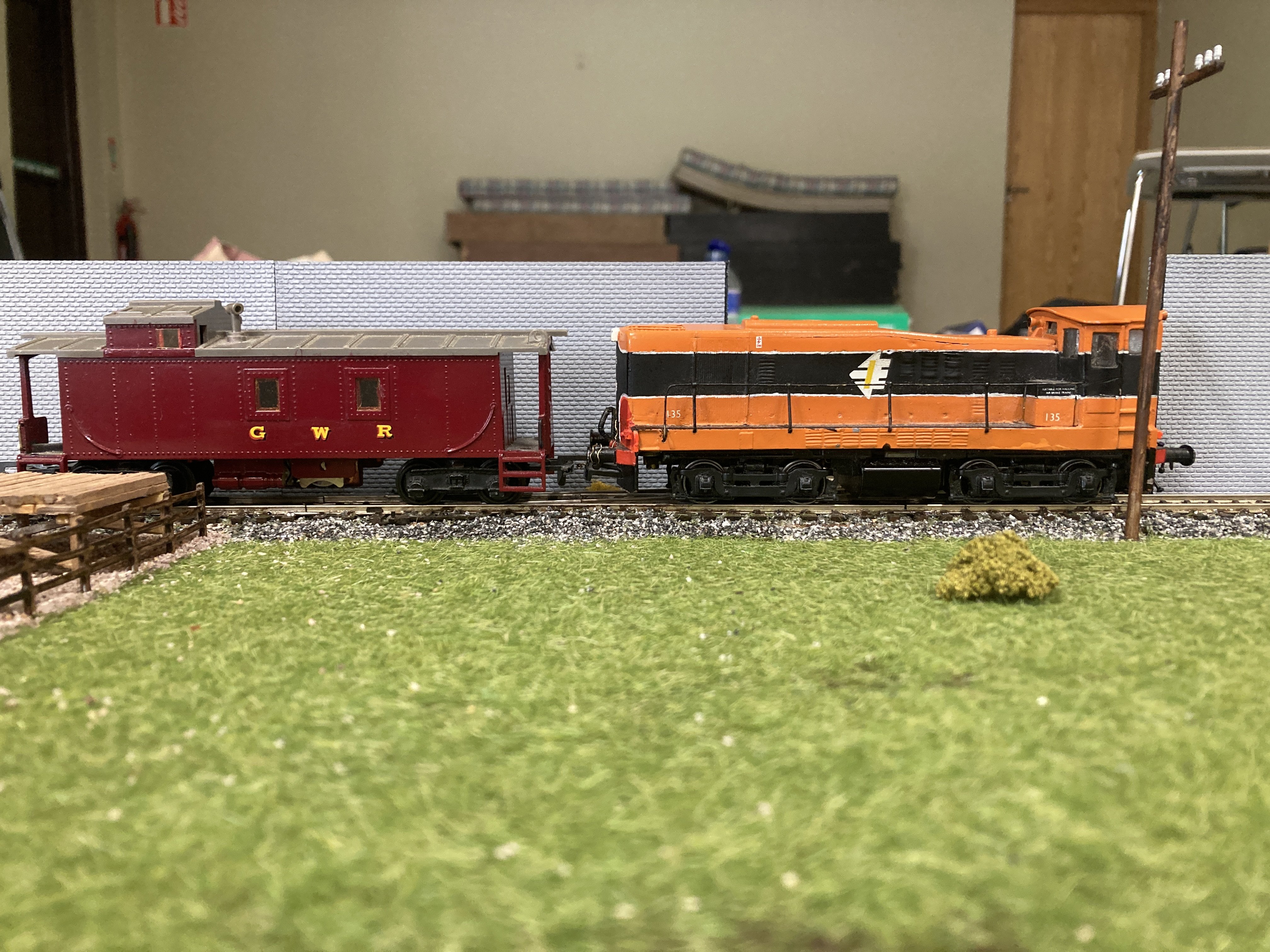-
Posts
682 -
Joined
-
Last visited
-
Days Won
3
Content Type
Profiles
Forums
Events
Gallery
Blogs
Store
Community Map
Everything posted by LNERW1
-
That was great, wasn't it? I met a couple of YouTubers I'm a fan of, and bought an Arrow 2600 badge from the Táilte stand and a Metcalfe kit. I hope everyone else had a great time too.
-

MRSI Dublin Show 2024 - All New Venue - All in One Hall
LNERW1 replied to Blaine's topic in What's On?
Yeah, I do of course appreciate the needs of all involved with the exhibition, I'm just saying that quieter spaces need to be provided. At the Wexford show, which I have just left, there was an area just before you entered the main hall, where there was tea, cakes etc. I thought this functioned really well as a quieter space (although I didnt at any point feel the need to avail of it). Maybe classrooms aren't the way to go, but I feel they do provide a much more conversational and friendly atmosphere, apart from being a little more sensory-friendly. But then I suppose the needs of the many outweigh the needs of the few. -
Loved it, thanks.
-
As someone diagnosed with autism at age eight, and of course a railway modeller, exhibitions can sometimes bring conflicting emotions. I’m about to leave for the Wexford show, which is a nice, relatively quiet affair, but it’ll be the fourth exhibition I’ve been to, and out of all of them, last year’s South Dublin show sticks out as an interesting one, as it was set up in classrooms, with the only really large hall being relatively quiet. This, along with last year’s Autumn Wexford show, was a sharp contrast to the Great Electric Train Show, last year in Milton Keynes, which was a busy, full-on affair with very little accommodation for those who might have difficulty coping with loud, concentrated noise, busy spaces, etc. I suppose this may be a large attraction of a show- the hallowed “atmosphere” of an exhibition, but I don’t think providing some quiet space nearby would affect that. Please share your opinions on this, as I think accommodating those with neurological disorders such as autism, or ADHD, even things like dyslexia, with more legible signs, is important. Model shows have actually gotten really good at accommodating physical disabilities, but maybe it’s time to look towards helping those with invisible disabilities- it’s just as helpful. Edit: sorry, I should have clarified that the importance of this may be more, well, *important* because a growing number of railway modellers are affected by neurodivergence (which I feel is actually a slightly disrespectful term, but most people seem to prefer, so I’ll use it here).
- 8 replies
-
- 11
-

-

-

MRSI Dublin Show 2024 - All New Venue - All in One Hall
LNERW1 replied to Blaine's topic in What's On?
Maybe this is just me, but I kind of prefer individual classrooms with corridors between. I feel like it kind of allows for better compartmentalization of layouts, as well as providing quieter spaces, which could be viewed as important as a growing number of railway modellers (myself included) are being diagnosed with autism, and so naturally quieter spaces could help provide a relief from louder areas. At the Great Electric Train Show 2023, in Milton Keynes, I remember much preferring the two upstairs balcony areas to the louder downstairs hall (apart from a high-pitched buzzing that I can only assume came from some rogue electrical component or speaker). I think I’ll start another thread about this as it’s kind of an important issue, but isn’t very relevant to this topic. -
Be there tomorrow. look forward to seeing everyone.
-
Video unavailable, any idea why?
-
Fascinating to see an Irish loco in a British yard. Seeing something like a Pilot Scheme diesel or a BR Standard beside it would have been insane.
-
Am I the only one surprised that this was never turned into a Thomas and Friends plot?
- 1 reply
-
- 1
-

-
One more thing- Scully’s Dock won’t be there, will it? Saw it last year, a very nice layout.
-
Hey, I’m going from Laois! You’d think that’d be closer, but it’s a pain in the hole because, as everyone knows, Laois doesn’t exist and was invented by the Illuminati to detract from Kilkenny and Offaly’s power, as they were afraid they would overtake Dublin, Cork and Fermanagh (Which also doesn’t exist, long story). I reserve the right to be concerned that @Metrovik just reacted “agree” to that…
-

LNERW1 Starts Arguments-Episode II: The Thomas Menace
LNERW1 replied to LNERW1's topic in General Chat
Love stuff like that. Reminds me of the “Jimmy the Jinty” series by DCG12B on YouTube. I’ll get a link now. -

LNERW1 Starts Arguments-Episode II: The Thomas Menace
LNERW1 replied to LNERW1's topic in General Chat
Yeah, I’ve heard of an instance where Mattel copyright struck a YouTube video for containing a PUBLICLY AVAILABLE and FULLY CREDITED clip that they themselves had released. (This was Thomas btw) -

LNERW1 Starts Arguments-Episode II: The Thomas Menace
LNERW1 replied to LNERW1's topic in General Chat
Can a manufacturer other than Bachmann start making Thomas models? Like, Bachmann's models are fine, but they're toy-grade and expensive, and I feel like Accurascale could do a Cl92 job and make a brilliant model for not a lot of money. So, really, I'm just waiting for an Accurascale E2, K2, Black 5, A1, GWR 0-40ST, J70, (duck done), CR 812, 14XX, Stirling Single, Class 08, Stroudley 4WL coaches, ummm... List to be continued. -
I have already communicated with the SWR about this, as I live locally and the SWR is 20mins away, and Coolnamona 10. I'll be visiting Stradbally this weekend (If anyone else is, let me know), and I'll be chatting to the lads about that there. Guessed as much. Mine's done so too. Thanks for fixing.
-
@Mayner please adress the large amount of space below the text here. It is getting quite irritating to scroll for a solid minute to reach the bottom of the page. I'm not sure why it's happening? It seems like there were supposed to be photos or something there.
-
BnM have confirmed LM335 is being preserved. 437 and 387 are still on offer. Any opinions?
-
@Mayner is there supposed to be so much space below the text? Every time I visit this topic I have to scroll for about a minute to reach the bottom! Well, I suppose if you want to call it that, I won't stop you. Also, BnM have replied to my query advising me to make an expression of interest in LM335, 387 and 437. Anyone want to help, that would be great, as my Revolut account currently has 72c in it. Ah the joys of being a teenager and having everyone do everything for you.
-
Any forum members in the Laois area- anyone interested in visiting the site? It’s fairly accessible, although down a *slightly* bumpy road. A level crossing is accessible a couple hundred metres from the Coillte Togher Wood carpark. Here’s the location of the level crossing: 53°00'13"N 7°19'38"W (Copy and paste into Google Maps)
-
So, I went to the Portlaoise plant today and there were several under frames that look like they would be fairly well-suited to passenger conversion. I honestly don’t think it would really be a problem- the Bicton Gardens Light Railway, which is somewhere in the Home Counties, uses Woolwich Arsenal Railway under frames on its passenger stock.
-
Alright, the engines are numbered: LM437, LM335 and LM387. Photos to follow.
-
Great, hope I can make it.
-
RailMapOnline is a good source, with historic, narrow gauge, modern, industrial, light rail, tramway, metro and even HS2 layers, and has maps not only of railways in the British Isles, but also the Western USA, as well as some maps of canals and airbases for whatever reason.
-
I think I remember seeing that at last year’s August show- brilliant layout, I hope I can make it to the show even just to see that. Does anyone know if the MRC will be exhibiting that large 0 gauge layout? The name escapes me, but I must say I found it very impressive.
-

LNERW1 Starts Arguments-Episode II: The Thomas Menace
LNERW1 replied to LNERW1's topic in General Chat
YES, they made 5741! I don’t CARE how much that costs, I WANT DUCK. (sorry for excessive capslock, I’m very excited)
.png.c363cdf5c3fb7955cd92a55eb6dbbae0.png)


